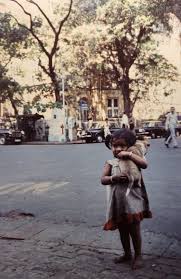
Introduction
Mumbai, the financial capital of India, is a bustling metropolis known for its rich culture, diverse population, and significant economic contributions. As one of the most populous cities in the world, its relevance extends beyond borders, impacting global finance, arts, and education. In recent years, Mumbai’s development has accelerated, adapting to evolving urban challenges while preserving its unique heritage.
The Growth of Mumbai
Historically, Mumbai has been a melting pot of cultures and communities, characterized by the coexistence of wealth and poverty. The city is home to the Bombay Stock Exchange, one of the oldest stock exchanges in Asia, and numerous multinational corporations that fuel its economy. With a GDP of approximately USD 400 billion, Mumbai accounts for around 6% of India’s GDP and contributes over 25% of industrial output.
In response to urban challenges, the city has implemented several infrastructural projects, such as the Mumbai Coastal Road and the expansion of the Mumbai Metro. These initiatives aim to improve traffic congestion and enhance connectivity across the city, reflecting the government’s commitment to sustainable urban development.
Cultural and Social Fabric
Mumbai’s vibrancy is evident in its diverse cultural landscape. The city hosts numerous festivals, such as Ganesh Chaturthi and Diwali, which attract millions and reflect its rich traditions. The entertainment industry, particularly Bollywood, plays a significant role in shaping the city’s identity. Mumbai is not only a hub for film production but also a significant center for art, literature, and theater, attracting talent from various parts of the country and beyond.
Recent Developments and Future Directions
As of 2023, Mumbai is navigating significant challenges, such as rising housing costs and climate change. The ongoing efforts to address these issues include launching affordable housing projects and enhancing green spaces. Additionally, as part of its push towards becoming a smart city, Mumbai is integrating technology into public services, aiming to improve the quality of life for its residents.
Conclusion
With its dynamic economy, rich cultural heritage, and continuous development, Mumbai remains a focal point of interest for investors, tourists, and scholars alike. The city’s ability to adapt to challenges while fostering growth and innovation signifies its sustained importance on a global scale. Looking forward, Mumbai is poised to further strengthen its position as a leading world city, reflecting the resilience and spirit of its people.



